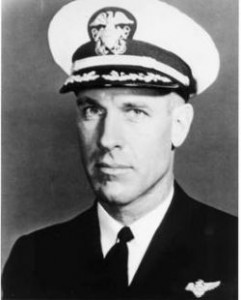Thomas J. Hudner’s Medal of Honor
 59 years ago during the Korean War, eight Navy F4U Corsairs from the USS Leyte‘s Fighter Squadron 32 (VF-32) were flying an armed reconnaissance mission near the Chosin Reservoir. Ensign Jesse Brown (the Navy’s first black aviator)’s plane was hit, and crash landed on the side of a snow-covered mountain. Brown was unable to get out of the cockpit of the smoking aircraft, and the men of VF-32 knew that the Chinese would reach Brown before the rescue helicopter could.
59 years ago during the Korean War, eight Navy F4U Corsairs from the USS Leyte‘s Fighter Squadron 32 (VF-32) were flying an armed reconnaissance mission near the Chosin Reservoir. Ensign Jesse Brown (the Navy’s first black aviator)’s plane was hit, and crash landed on the side of a snow-covered mountain. Brown was unable to get out of the cockpit of the smoking aircraft, and the men of VF-32 knew that the Chinese would reach Brown before the rescue helicopter could.
While the remaining aircraft circled overhead, Brown’s wingman, Lt. J.G. Thomas Hudner, decided to crash-land his own Corsair next to Brown’s. “I knew what I had to do,” said Hudner in an interview. “I was not going to leave him down there for the Chinese. Besides, it was 30 degrees below zero on that slope, and he was a fellow aviator. My association with the Marines had rubbed off on me. They don’t leave wounded Marines behind.”
After reaching Brown’s aircraft, Hudner was unable to remove his wingman from the cockpit. Brown was barely alive, and by the time a Marine helicopter arrived to assist in the rescue, Brown had died. They were unable to remove Brown’s body, and the approaching darkness forced the men to leave the fallen aviator behind.
For his actions, Thomas Hudner was awarded the Medal of Honor. Jesse Brown was awarded the Distinguished Flying Cross and the escort ship USS Jesse L. Brown was named in his honor.
You can read Hudner’s Medal of Honor citation here.